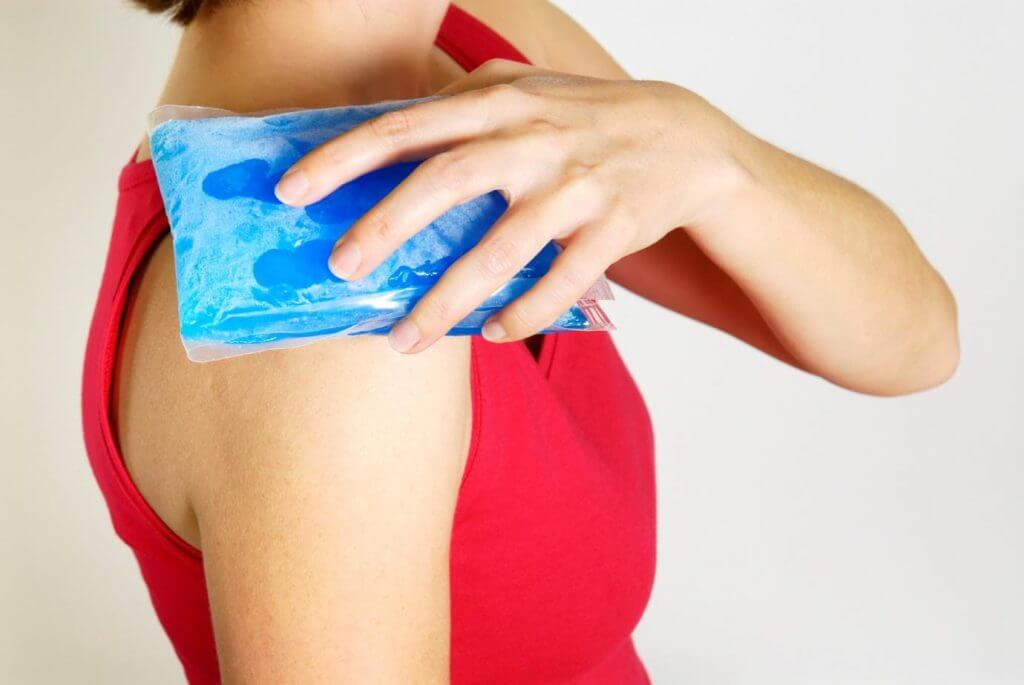Biceps tendinitis is the inflammation of the bicep tendon at the front of the shoulder. The biceps muscle connects to the forearm bone and the shoulder via tendons, called the bicep tendon. The biceps long head passes through the groove that sits at the front of the shoulder, where the ball and socket joint is, and this is where the inflammation and pain occurs.
Biceps Tendinitis
What is Biceps Tendinitis?

What Causes It?
Regular repetitive motion above the head and is quite common in athletes aged 18-35. Individuals who do regular resistance training at the gym may also experience this type of injury, as they place a strain on the bicep tendon.
People who start experiencing symptoms have recently increased repetitive or prolonged activities. For example, increasing your workload/hours, especially in occupations such as construction, mining and painting.
Overuse activities may lead to tendon degeneration and tears; therefore, it is critical a Physiotherapist assesses you to start the rehabilitation process and reduce the risk of further damage.
Symptoms
People who suffer from this kind of injury report the following symptoms:
- Shoulder tenderness, which worsens with activities as simple as reaching forward or sideways
- Shoulder pain that can be described as an ache, or even a sharp, catching pain. This pain can also radiate to other areas like the upper arm or neck.
- A snapping sound in the shoulder.
- Difficulty lifting heavy objects, especially if lifting objects overhead
Diagnosis
A physiotherapist will perform a thorough physical examination to determine which structures in the shoulder are injured. This will include looking, feeling, measuring and testing for different things in the affected upper limb. Your therapist will also perform some special tests, one of which is called the Speeds test. This test helps in identifying whether the bicep tendon is the cause of the pain.
Your doctor may also recommend imaging such as an MRI to confirm damage to specific soft tissue structures.

Treatment
- Rest is the first step toward recovery. Try to stop or reduce any aggravating activities, such as overhead or sudden movements that may provoke the shoulder pain.
- Applying ice to the area may help reduce the swelling and pain. It is encouraged you apply ice every 2 to 4 hours for 20mins.
- Joint mobilisations, dry needling or soft tissues massage may help. Your therapist may also tape your shoulder in a specific way to reduce pain.
- Range of motion exercises.
- Progressive strengthening program with an emphasis on scapular stabilisers and rotator cuff muscles.
Prevention
- Stretching and an appropriate warm up is an important aspect in the prevention of injury. It is recommended that you perform dynamic stretches before your exercises/activity and static stretches post-exercise.
- Avoiding excessive repetitive overhead activities.
- Ensure you have adequate recovery periods from sport/activity.
- Work on the strength of your scapular stabilisers and rotator cuff muscles so they can cope with increased load.
- Be conscious of your work posture!.
For all your Biceps Tendinopathy needs, feel free to give us a call on 02 9793 8840 or Book Online

New Client Offer - 10% OFF
Are you in pain? Not sure if we can help you?
Book your initial appointment and receive 10% off any service!